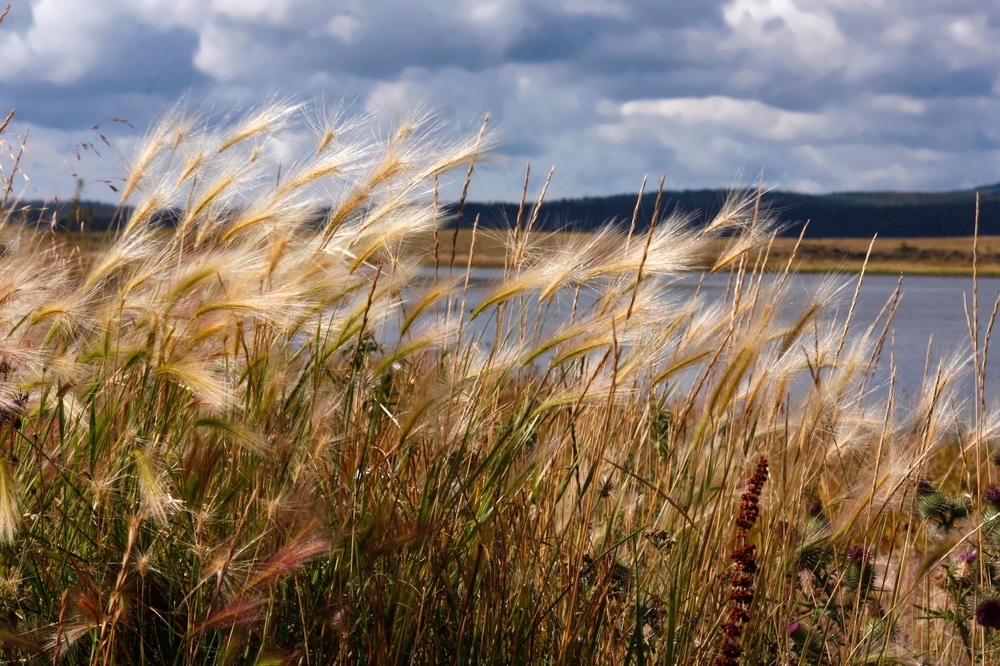Nestled in the eastern highlands of Arizona, Eagar stands as a resilient mountain community embraced by the stunning landscapes of the White Mountains. Located in Apache County at an elevation of 7,080 feet, this small but vibrant town enjoys four distinct seasons and breathtaking natural beauty. With a population of approximately 5,000 residents, Eagar combines a close-knit rural atmosphere with access to remarkable outdoor recreation. The community is predominantly comprised of families with deep generational roots, many descending from Mormon pioneers who settled the area, alongside newer residents drawn to the area’s natural splendor and quality of life. What makes Eagar truly unique is its harmonious blend of Mormon heritage, Western ranching traditions, and deep connections to the land that have created a community that values self-sufficiency, neighborly support, and preserving its distinctive mountain culture while adapting to modern challenges.
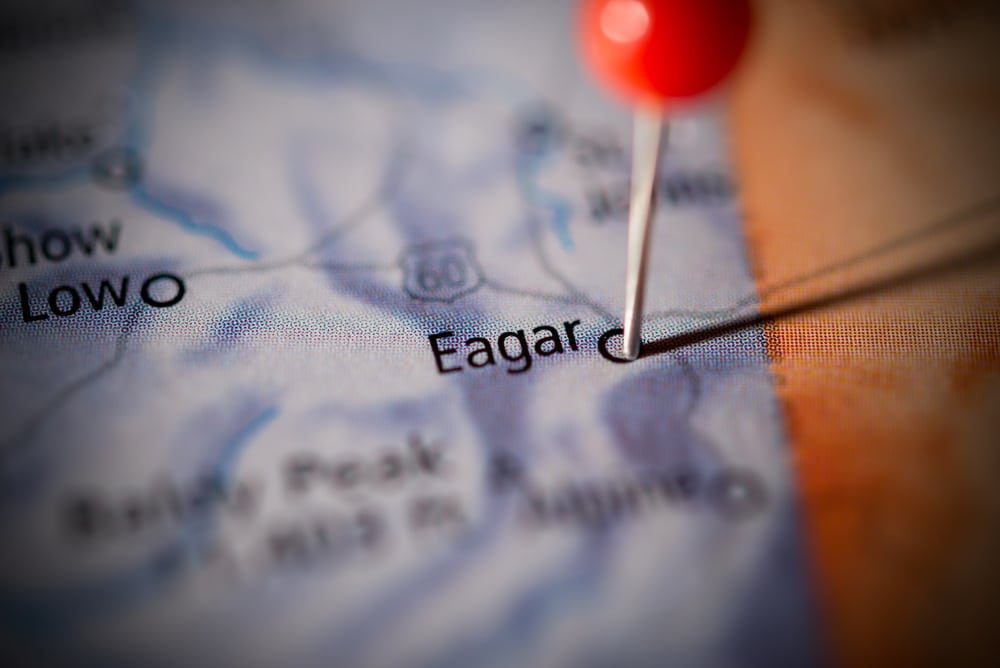
Today, Eagar’s history is preserved through the Eagar Heritage Museum, pioneer-era buildings like the Ammon Tenney home, and community celebrations that honor the town’s founding families. Annual Pioneer Day festivities particularly highlight the town’s historical roots, with descendants of original settlers often participating in historical reenactments and storytelling events.
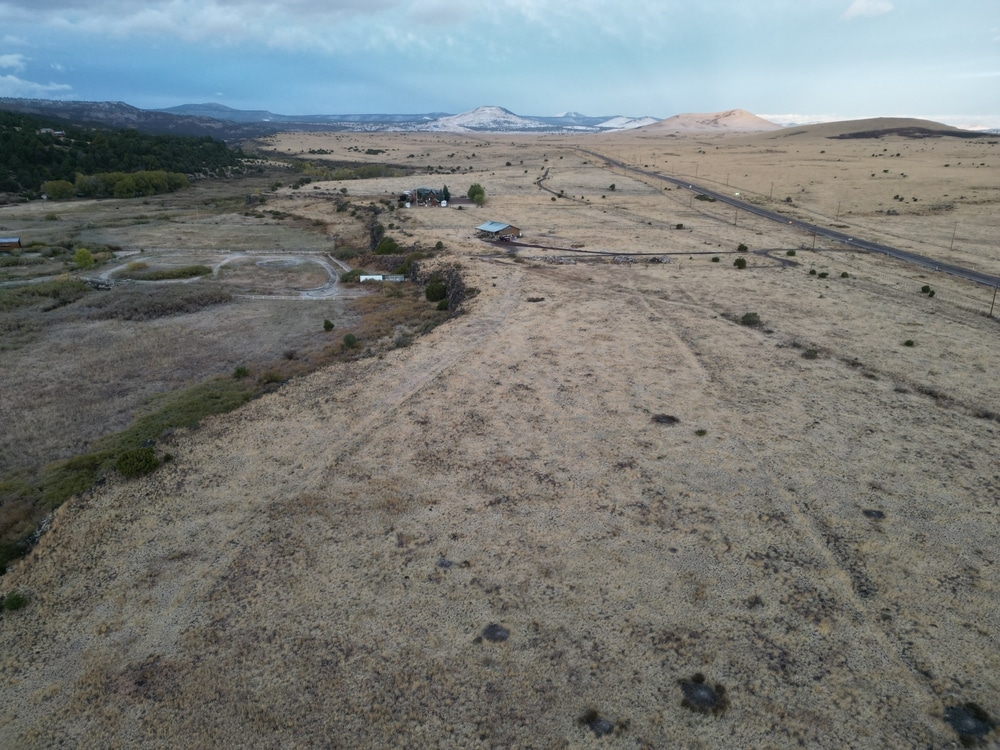
Before European settlement, the fertile Round Valley where Eagar now sits was the traditional territory of the White Mountain Apache people, who utilized the area’s abundant resources for hunting and seasonal gathering. The Apache relationship with this land continues to influence the broader regional identity, though their presence in Eagar itself diminished following European settlement.
The town’s modern history began in 1879 when Mormon pioneer Joel Eagar, sent by Brigham Young as part of the Arizona colonization effort, established a homestead in what would become the town bearing his name. These early Mormon settlers were drawn to the area’s fertile soil, ample water, and protective mountain setting. The original settlement grew slowly but steadily as families built homes, established farms, and constructed irrigation systems that transformed the valley.
A significant turning point came in 1888 when the town was officially established, and again in 1895 when the nearby Apache Railroad connected the isolated community to wider commerce. The Great Depression tested the community’s resilience, but the establishment of logging operations in the mid-20th century brought new economic stability.
Notable historical figures include Ammon Tenney, an influential pioneer and church leader who helped negotiate peaceful relations with the Apache, and Deborah Hamblin Eagar, Joel’s wife, whose midwifery skills and community leadership were vital to the early settlement’s survival.
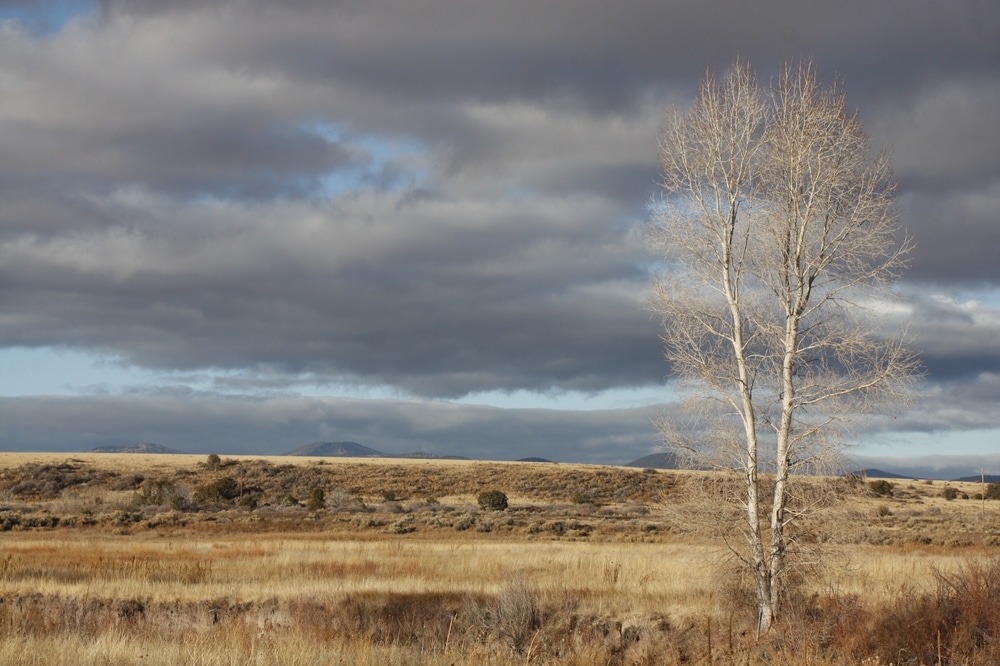
| Category | Details |
|---|---|
| Location | Eastern Arizona, Apache County, adjacent to Springerville in the Round Valley |
| Founded | 1879 by Mormon settlers (the Eagar family) |
| Incorporated | 1948 |
| Population | Approx. 4,400 (as of the 2020 Census) |
| Elevation | ~7,080 feet (2,158 meters) — cool alpine environment |
| Climate | Four-season mountain climate; cool summers, snowy winters |
| Known For | Outdoor recreation, strong community traditions, family living |
| Major Attractions | Round Valley Dome (sports facility), White Mountains, Little Colorado River, Community Heritage Park |
| Key Industries | Education, healthcare, local government, small business, tourism |
| Cultural Significance | Deep LDS roots, ranching heritage, and high-altitude farming |
| Annual Events | Eagar Daze Festival, Fourth of July Parade, Christmas Light Parade |
| Transportation | U.S. Routes 60, 180, and 191; near Springerville Municipal Airport |
| Education | Round Valley Unified School District |
| Nearby Natural Sites | Apache-Sitgreaves National Forest, Sunrise Park Resort, Greer, Big Lake |
| Outdoor Activities | Hiking, fishing, snow sports, horseback riding, camping |
| Community Features | Family-friendly neighborhoods, sports and rec facilities, schools, libraries |
| Tourism Appeal | A quieter, family-centered base for exploring the White Mountains region |
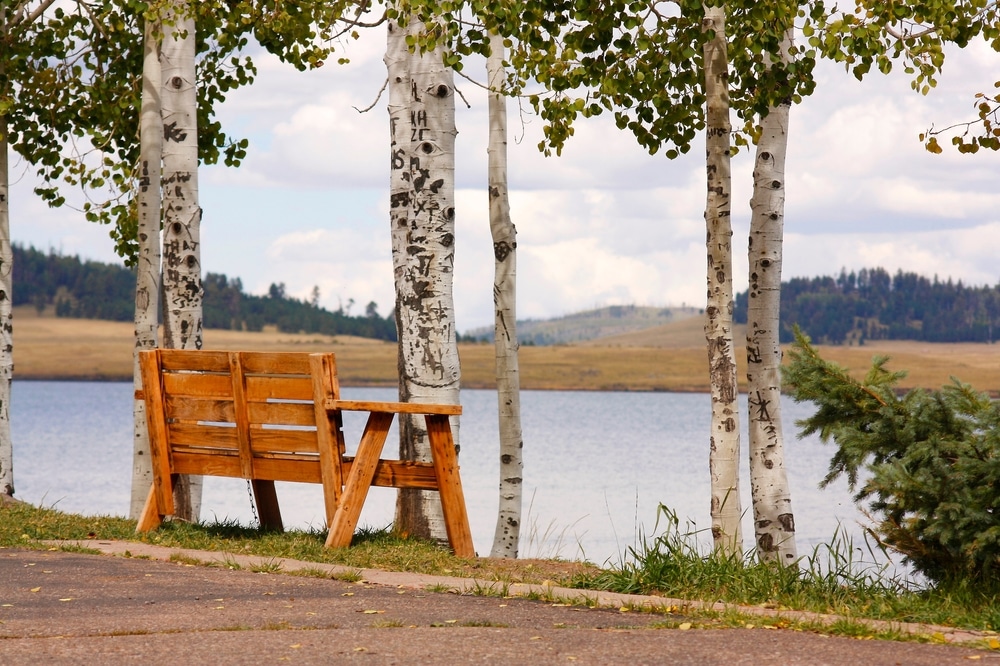
Eagar’s cultural foundation rests primarily on three pillars: Mormon religious traditions, Western ranching culture, and mountain adaptation. The Church of Jesus Christ of Latter-day Saints remains the dominant religious and cultural influence, with its emphasis on family, community service, and self-reliance shaping many local traditions and social structures. This religious heritage is evident in everything from the prominence of family genealogy research to community food storage practices.
The ranching way of life has imbued Eagar with strong connections to Western traditions, evident in the popularity of rodeos, horseback riding as both recreation and practical transportation, and the prevalence of practical ranching skills among residents. Many families maintain small agricultural operations that blend traditional methods with modern adaptations.
While primarily Anglo-American in its settlement history, Eagar has experienced increasing cultural diversity in recent decades. Hispanic influences have grown, bringing new cultural traditions and culinary contributions to community life. The proximity to the White Mountain Apache Reservation has also created cultural exchanges, particularly visible in local crafts and outdoor skills preservation.
Language traditions include distinctive Mormon pioneer phrases and rural Western colloquialisms that persist even among younger generations. Local expressions often reference weather patterns, mountain features, or ranching terminology in ways unique to the area.
Cultural preservation efforts are centered around the Round Valley Public Library’s local history collection, church-sponsored family history initiatives, and intergenerational skills sharing programs that teach traditional crafts, food preservation, and land management practices. Recent years have seen a renewed interest among younger residents in documenting oral histories and digitizing historical records to ensure these cultural memories endure.
Eagar’s artistic expression reflects its mountain setting and rural heritage, with distinctive craft traditions emerging from practical needs. The town’s artistic identity is characterized by functional craftsmanship rather than purely decorative art—handcrafted furniture using local woods, practical pottery, quilting traditions passed through generations, and leather working that originated with ranching necessities.
Notable local artists include Debra Tilley, whose landscape paintings capture the dramatic light of the White Mountains through changing seasons; James Hamblin, a fifth-generation woodworker known for his hand-carved furniture that incorporates regional motifs; and Mary Lund, whose contemporary pottery blends traditional Native American techniques with modern forms.
While Eagar lacks large formal galleries, artistic expression finds public outlets through rotating exhibitions at the Round Valley Public Library, the seasonal Mountain Trails Art Market, and displays in local businesses. The historic Eagar Town Hall occasionally transforms into a community art space during special events.
Art education thrives primarily through informal channels—apprenticeships with established craftspeople, community workshops at the senior center, and programs at Round Valley High School that emphasize traditional crafts alongside contemporary art forms. The annual Youth Heritage Arts Program specifically teaches young people traditional skills like weaving, woodworking, and leather crafting.
The landscape profoundly influences local artistic expression, with the dramatic seasonal changes of the White Mountains appearing in virtually all local art forms. Artists frequently reference the interplay of light on mountain slopes, the specific blue of the summer sky at high elevation, and the textures of local flora in their work. This deep connection to place creates art that serves as both expression and documentation of Eagar’s distinctive natural setting.
Eagar’s community calendar reflects its values, heritage, and the rhythms of mountain life. These gatherings serve as cultural touchstones that reinforce community bonds while also attracting visitors who contribute to the local economy. Community events showcase both traditional culture and evolving community interests, creating spaces where different generations and newcomers can connect with Eagar’s distinctive identity.
The last weekend in July transforms Eagar with this three-day celebration honoring the town’s founding families. Established in 1888 and expanded over generations, Pioneer Days features historical reenactments of the settlers’ journey, traditional craft demonstrations, and a heritage parade with horse-drawn carriages. The “Taste of Heritage” food festival showcases dishes from original pioneer recipes preserved by descendant families. The celebration culminates in a community pageant where residents of all ages portray key moments from town history, reinforcing intergenerational connections to Eagar’s origins.
This October celebration honors the harvest season and dramatic autumn colors that grace the surrounding mountains. Traditional agricultural displays feature local produce, with competitions for the largest pumpkin and best preserves that have been running continuously since 1923. The festival includes apple pressing demonstrations using heirloom varieties grown by descendant families from original pioneer orchards. Evening barn dances feature both traditional and contemporary mountain music, creating rare opportunities for different community segments to come together in celebration before winter arrives.
Established in 1975, this August event has grown from a small local demonstration to a regionally significant celebration of textile traditions. Local artisans showcase spinning, weaving, quilting, and fiber preparation techniques with roots in both pioneer necessity and contemporary artistic expression. Workshops connect master craftspeople with beginners, ensuring traditional skills transfer to new generations. The event culminates in a community quilt auction that raises funds for the local historical society while highlighting how textile arts remain both practically and culturally significant in Eagar’s modern identity.
This spring tradition brings together hundreds of volunteers from across religious and social divides to complete essential community projects. Established in 1946 following a devastating flood, the event now includes trail maintenance, cemetery restoration, assistance for elderly residents, and public space beautification. Local businesses donate materials and provide lunch for volunteers, while school groups participate for service learning credits. The day concludes with a community potluck that celebrates the Mormon pioneer value of cooperative labor while addressing contemporary community needs.
This relatively new February tradition, established in 2001, celebrates Eagar’s winter recreational opportunities with competitions in cross-country skiing, snowshoeing, and ice fishing at nearby Becker Lake. The festival includes snow sculpture contests and sledding races that attract families from across eastern Arizona. What distinguishes this event is its deliberate blending of traditional winter survival skills demonstrations with contemporary winter sports, creating connections between historical mountain adaptation and modern recreational enjoyment of the winter landscape that defines so much of Eagar’s yearly experience.
Eagar proudly embraces its identity as “The Heart of Round Valley,” a nickname reflecting both its geographical position and its role as a community anchor. Locals sometimes refer to the area as “Mountain Mormon Country,” acknowledging the distinctive blend of Mormon culture adapted to mountain living that characterizes the town. The official town motto, “Where the mountains meet the sky,” captures the omnipresent influence of the natural setting on community identity.
The community’s values center around self-reliance paired with neighborly support—seemingly contradictory qualities that have evolved from both Mormon religious teachings and the practical necessities of rural mountain life. Residents consistently describe a community where independence is highly valued, yet help is readily available when needed. This balanced approach is evident in everything from informal food sharing networks to emergency response systems that blend official services with volunteer support.
Architecturally, Eagar displays a practical mountain vernacular, with many homes featuring deep eaves to manage snow load, generous porches for summer living, and orientation to maximize solar gain during winter months. Original pioneer homes were built of local materials, particularly ponderosa pine, and newer construction often references these traditional forms while incorporating modern efficiency. The town layout follows a modified Mormon grid system, with wide streets and generous lots that originally accommodated small-scale agriculture—a pattern still visible despite increasing development.
When describing their community to outsiders, residents typically emphasize three qualities: the close-knit nature of social relationships where “everyone knows everyone,” the remarkable four-season climate that shapes daily life, and the continuing importance of practical self-sufficiency skills. Longtime residents often note that while the community has become more diverse and connected to outside influences, the fundamental character of neighbors helping neighbors while respecting independence remains unchanged across generations.
Eagar operates under a council-manager form of government, with a mayor and six council members elected to four-year terms. The town manager handles day-to-day operations, overseeing a relatively small municipal staff. This lean governmental structure reflects both budget constraints and community preference for limited local government.
Decision-making in Eagar blends formal processes with strong informal networks. Town council meetings regularly see high citizen attendance, particularly when issues involve land use, water rights, or cultural preservation. The annual town budget workshop transforms into a de facto community forum where priorities are debated and shaped through direct citizen input.
Key community organizations that influence governance include the Round Valley Rotary Club, which leads many community improvement projects; the Eagar Heritage Preservation Committee, which advocates for historic conservation; and the interdenominational Ministerial Alliance, which coordinates social services and disaster response. The Round Valley Community Action Network, established in 2010, has emerged as an important voice representing newer residents and younger families in community planning.
Notable community-led initiatives include the Round Valley Trails Association, which has developed an extensive network of multi-use paths connecting neighborhoods to schools and recreation areas; the Eagar Water Conservation Collaborative, which has implemented innovative drought management approaches; and the Youth Community Council, which provides high school students with meaningful roles in municipal governance while developing future community leaders.
The community’s approach to governance reflects its values—practical problem-solving, fiscal conservatism, and preference for volunteer-driven solutions over expanded government services. This has created a distinctive civic culture where formal government functions as just one element in a broader system of community self-management.
Eagar’s economy has evolved from its agricultural and timber foundations while maintaining strong connections to these historical drivers. The decline of large-scale logging operations in the 1990s forced significant economic adaptation, with the community diversifying into outdoor recreation, small-scale manufacturing, healthcare services, and remote work opportunities.
Today’s economic pillars include the Round Valley Unified School District, the Apache-Sitgreaves National Forest Service offices, White Mountain Regional Medical Center, and a growing tourism sector tied to outdoor recreation. Seasonal employment related to forest management and hunting remains significant, though less dominant than in previous generations.
The small business ecosystem is characterized by multi-generational family enterprises, particularly in construction trades, ranching support services, and retail. Local entrepreneurship has seen recent growth in specialty food production, outfitting services, and home-based online businesses that allow residents to maintain their rural lifestyle while connecting to broader markets.
Unique local products include specialty beef from high-elevation ranches, hand-crafted furniture from local woods, and increasingly, value-added forest products like mushrooms and herbal preparations. The White Mountain Farmers Market provides an important outlet for small-scale producers, while the Round Valley Business Incubator, established in 2015, has helped launch several successful artisanal manufacturing operations.
Economic challenges include limited employment opportunities for young adults, resulting in outmigration; seasonal fluctuations in income related to tourism and weather; and the persistent tension between economic development and preservation of community character. The community continues to navigate the complex transition from resource extraction to a more diverse and sustainable economic model that maintains its rural qualities while providing sufficient livelihood opportunities.
Education in Eagar centers around the Round Valley Unified School District, which serves as both an academic institution and a community hub. The district operates Round Valley Elementary, Middle, and High Schools, all of which play significant roles in community life beyond formal education. School facilities host numerous community events, adult education programs, and serve as emergency shelters when needed.
Distinctive educational approaches include the “Mountain Heritage Curriculum,” which incorporates local history, ecology, and traditional skills into standard subjects. This program features regular field experiences where students learn directly from community elders and natural resource professionals. The high school’s agricultural program remains particularly strong, with its student-run ranch operation winning regional recognition for innovative approaches to sustainable livestock management.
Informal education thrives through the “Community Experts” program, which brings local knowledge holders into classrooms to share specialized skills and oral histories. The Round Valley Public Library supplements formal education with extensive local history collections and practical workshops ranging from traditional food preservation to modern technological skills.
A noteworthy initiative is the “Generation Bridges” program, which pairs senior citizens with elementary students for weekly activities that transmit cultural knowledge while addressing social isolation among older residents. This program has become a model for other rural communities seeking to strengthen intergenerational connections while preserving local knowledge.
The relationship between Eagar residents and their natural environment remains fundamental to community identity. Surrounded by the Apache-Sitgreaves National Forests and in close proximity to the White Mountain Apache Reservation, daily life continues to be shaped by seasonal rhythms, weather patterns, and traditional outdoor practices.
Seasonal activities follow long-established patterns: spring brings family gardening using heirloom techniques adapted to the short growing season; summer centers around hiking, fishing, and gathering forest products; fall focuses on hunting traditions and wood gathering; and winter features cross-country skiing and snowshoeing on trails established generations ago.
Traditional knowledge of local plants remains strong, with many families still gathering wild foods and medicinal plants according to practices passed through generations. The Annual Foraging Festival celebrates this knowledge while emphasizing sustainable harvesting practices that blend traditional ethics with modern conservation science.
Environmental stewardship manifests through the Eagar Watershed Protection Alliance, which has implemented innovative grassroots monitoring programs; the volunteer-led Forest Health Collaborative that works with federal agencies on restoration projects; and the youth-focused Alpine Ecology Camp that builds scientific understanding alongside traditional ecological knowledge.
The community’s connection to its natural setting is perhaps most evident during times of environmental threat, such as the 2011 Wallow Fire, when residents mobilized remarkable resources to protect both built and natural environments while demonstrating deep attachment to the landscape that defines their community.
Eagar’s food traditions reflect its pioneer heritage, high-elevation growing conditions, and the necessity of preservation in a remote mountain community. The short growing season has historically required intensive gardening during summer months and extensive food preservation for winter use—practices that continue in many households despite modern grocery access.
Signature dishes with historical significance include Pioneer Bread, a dense sourdough made from starter cultures maintained in some families for over a century; Mountain Lamb Stew, featuring meat from sheep raised on high alpine meadows combined with storage vegetables; and Pine Nut Pudding, which incorporates traditionally harvested nuts from the surrounding forests.
Local ingredients unique to the region include heritage apple varieties descended from pioneer orchards, high-elevation honey with distinctive floral notes from mountain meadows, and wild mushrooms harvested according to seasonal patterns established by early settlers and influenced by Native American knowledge.
Food-centered celebrations include the Harvest Blessing, where families share preserved foods from their summer gardens; the Dutch Oven Gathering, which maintains the tradition of outdoor cooking in cast iron; and the Winter Game Dinner, where hunting families share their bounty with the broader community.
Establishments maintaining traditional foodways include Wilson’s Family Restaurant, where multi-generational recipes appear as daily specials; the Round Valley Bakery, which continues to use traditional sourdough methods; and the seasonal Mountain Top Farmers Market, which connects local producers directly with consumers seeking authentic local foods.
Physical spaces where community connections form are particularly important in Eagar, where harsh winter weather can limit social interaction. Both historic and contemporary gathering places reflect community values and facilitate the relationships that sustain small-town life.
The historic Round Valley Dome, built in 1959 as a community effort, serves as both sporting venue and meeting space. Its distinctive architecture has made it a regional landmark, while its walls display community memorabilia spanning generations. The Round Valley Public Library functions as an informal community living room, where residents of all ages and backgrounds interact outside the structures of organized events.
Outdoor gathering spaces include Round Valley Park, which hosts community celebrations and informal family gatherings; the Town Square Pavilion, constructed in 2012 using volunteer labor and featuring a design that references historic community structures; and Ramsey Park, where the community’s memorial garden honors residents who have shaped town history.
Informal meeting places hold equal importance in community life. The Round Valley Cafe serves as an unofficial community information exchange, where personal news travels faster than official channels. The True Value Hardware store’s front bench has been a gathering spot for senior residents for decades, forming what locals call “the outdoor history museum” where stories and practical knowledge are freely shared. Martinez Feed Store becomes a social hub during seasonal transitions, when ranchers and hobby farmers gather to exchange practical advice and community news.
These gathering places, both formal and informal, create the connective tissue that maintains Eagar’s identity as a close-knit mountain community despite increasing connections to broader society.
Throughout its history, Eagar has faced significant challenges that have tested and ultimately strengthened community bonds. Historical challenges include devastating fires in 1901 and 1948 that destroyed significant portions of the town center; periodic drought cycles that threatened agricultural livelihoods; and economic disruption when the timber industry declined dramatically in the 1990s.
Contemporary challenges include maintaining economic viability for young families; managing increasing tourism without compromising community character; addressing water security in an era of climate uncertainty; and balancing the desire to preserve traditional values with the need to welcome newcomers and new ideas.
The community’s resilience is demonstrated through numerous adaptation strategies. Following the timber industry decline, the community established the Round Valley Economic Development Commission, which successfully recruited small manufacturing enterprises and developed tourism infrastructure. When drought threatened agricultural operations in the early 2000s, the Eagar Water Conservation Collaborative developed innovative water-sharing arrangements that preserved both commercial and family farming operations.
The “Eagar Strong” movement that emerged following the catastrophic 2011 Wallow Fire exemplifies the community’s adaptive capacity. When the fire threatened the town’s very existence, residents not only organized effective evacuation and support systems but returned to implement community-wide revegetation projects and create a more robust emergency response network that has become a model for other rural communities.
This pattern of meeting challenges with collective action and practical innovation remains central to Eagar’s identity, with residents frequently citing the community’s proven ability to “weather any storm” as a source of confidence when facing contemporary uncertainties.
Eagar approaches its future with careful attention to balancing necessary change with preservation of core community values. This balanced approach is evident in the Eagar Comprehensive Plan, developed through extensive community engagement, which explicitly identifies elements of community heritage to be preserved alongside pathways for sustainable development.
Preservation efforts focus on maintaining the physical and cultural landscape that defines Eagar’s character. The Historic Streetscape Preservation Ordinance ensures that new commercial development references architectural elements of the town’s pioneer-era buildings. The Community Heritage Skills Program documents and teaches traditional practices, from ranching techniques to food preservation, ensuring these capacities remain living traditions rather than museum artifacts.
The community has shown particular creativity in adapting historical buildings for contemporary uses that honor their origins while meeting current needs. The former Eagar Elementary School now houses the Community Innovation Center, which supports small business development while maintaining the building’s historic facade and community significance. The adaptive reuse of the historic Grange Hall as a youth arts center similarly preserves physical heritage while serving emerging community priorities.
Residents frequently express hopes for a future that maintains Eagar’s distinctive character while providing sufficient economic opportunity to allow younger generations to remain in the community. This vision generally includes continued agricultural activity, even if at smaller scales; maintenance of dark night skies and natural viewsheds; preservation of traditional knowledge alongside contemporary innovation; and sustaining the community self-reliance that has defined Eagar through generations of change.
When asked what makes their community special, Eagar residents consistently point not to specific attractions or resources, but to the quality of human connections that develop in this small mountain town. “It’s the neighbor who plows your driveway without being asked during a snowstorm,” explains Maria Rodriguez, a relative newcomer who has embraced the community’s ethos. “It’s how people show up for each other in practical ways, without making a big deal about it.”
Longtime resident James Thompson, whose family has lived in Eagar for five generations, points to the community’s relationship with time: “We don’t rush here. There’s a natural pace to life that follows the seasons and respects the limits of our mountain environment. That creates a different way of being together that you can’t find in many places anymore.”
This distinctive sense of place emerges from the intersection of Eagar’s spectacular natural setting, its resilient community traditions, and a collective wisdom born from generations of adaptation to mountain living. Young residents like Sophia Yazzie value this heritage while bringing new perspectives: “What makes Eagar special is how we can honor traditional knowledge while finding new ways to thrive in a changing world. The strength of our community comes from both its roots and its willingness to grow.”
This combination of deep roots and adaptive capacity defines the soul of Eagar—a community that continues to demonstrate how meaningful human connection, practical self-reliance, and respect for both natural and cultural heritage can create a distinctive way of life that remains relevant and compelling in the contemporary world.
